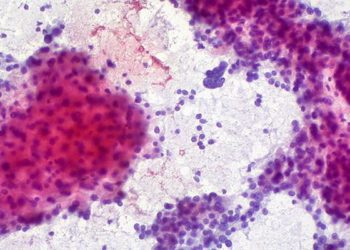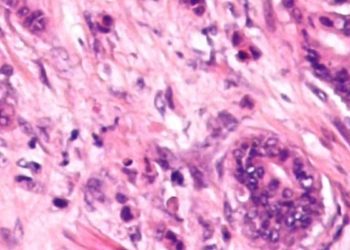Immune-related response criteria captures tumor response to therapy [Classics Series]
This study summary is an excerpt from the book 2 Minute Medicine’s The Classics in Medicine: Summaries of the Landmark Trials
1. Immune-related response criteria should be used to capture the effects of immunotherapeutic agents as they more accurately capture the variable antitumor response seen after their use.
2. Ipilimumab monotherapy resulted in distinct response patterns that are not captured by the existing guidelines for tumor response described by Response Evaluation Criteria in Solid Tumors (RECIST) or other similar guidelines.
Original Date of Publication: November 2009
Study Rundown: The development of anticancer therapies spurred the development of novel methods for measuring therapy response. From early World Health Organization (WHO) criteria to more recent RECIST and RECIST 1.1 criteria, the development of a common language for the description of tumor response has been important for clinical and basic research. Importantly, these criteria have also established the guidelines for defining progressive disease (PD). However, the development of immunotherapeutic agents led to the clinical observation that the response criteria delineated by the WHO or RECIST guidelines did not seem to capture the response of these new, targeted therapies. Specifically, the original paradigm defined stable disease (SD) as a subset that had either not reached a definition for partial response (PR) or PD, and importantly, it was not viewed as an endpoint indicative of therapy response. In the immunotherapy trials however, stable disease has been used as a marker for improved clinical outcome. Another key difference observed in immunotherapy was that patients would often experience an increase in tumor burden before seeing an overall complete response, PR, or SD. Under the RECIST guidelines, a substantial increase in tumor burden would have represented PD, and led to the cessation of therapy, preventing researchers from demonstrating long-term therapeutic effects that may have occurred after this short-term increase in tumor burden. In 2004 and 2005, an expert panel of over 200 oncologists, immunotherapists, and industry experts convened to develop new guidelines that adequately accounted for these observed clinical differences in patients undergoing immunotherapy. This expert panel used the results obtained from a large clinical trial program of patients with advanced melanoma undergoing immunotherapy. They concluded that the appearance of antitumor activity may take longer for immune therapy than for cytotoxic therapy, and that the response to therapy may occur after PD. They also provided a definition for clinically insignificant PD and suggested that SD durability may represent true antitumor activity. Additionally, new criteria were established for the assessment of tumor response, named the immune-related response criteria (irRC), which allowed for new lesions to be included into tumor burden without necessarily signaling progressive disease.
Click to read the study in the Journal of Clinical Oncology
In-Depth [expert opinion]: An expert panel used the clinical observations obtained from the use of ipilimumab (an immunotherapy agent that directs human monoclonal antibodies to block CTLA-4 receptor) in patients with advanced melanoma. These clinical observations were obtained from phase II clinical trials that included a total of 487 patients from 3 centers and recorded the patterns of clinical response to immunotherapy. Patients were treated with induction therapy followed by maintenance therapy, and an independent committee used the original WHO criteria and irRC to evaluate tumor response. Patients were expected to experience an increase in tumor burden before a response was obtained, and continued immunotherapy if they had not developed clinical deterioration. About 30% of patients who were treated in the phase II trials had CR, PR, or SD at week 12. Patients with SD at week 12 also demonstrated a slow response (PR and CR) after week 12. Additionally, patients who had PD at week 12 also demonstrated a response to therapy or SD after week 12 with the continuation of immunotherapy. Four distinct patterns of tumor response were obtained: response in baseline lesions by week 12 with no new lesions, stable disease, response after an initial increase in total tumor burden, and a reduction of total tumor burden concurrent with the appearance of new lesions after week 12. WHO or RECIST guidelines had previously not described the latter two criteria. The irRC guidelines define tumor burden as the sum of diameters of index lesions and of new measurable lesions. Index lesions are defined as the two largest perpendicular diameters of all index lesions (with index lesions defined as up to five lesions per organ, 10 visceral lesions, and five cutaneous lesions). New lesions are limited to those that are greater than 5 mm, up to 5 new lesions per organ, 5 per cutaneous lesions, and 10 visceral lesions. For complete response (irRC), disappearance of a lesions must be confirmed by a consecutive evaluation no less than 4 weeks from the date of first documented complete disappearance. For partial response (irPR), a decrease in tumor burden must be greater than or equal to 50% relative to baseline and confirmed at least 4 weeks after documentation. For stable disease (irSD), response does not meet criteria for irCR or irPR, and there must be no evidence of disease progression. For disease progression (irPD), there must be an increase in tumor burden greater than or equal to 25% relative to the minimum recorded burden and must be confirmed by consecutive assessment at least 4 weeks from the date of first documentation. Patients could have irPR or irSD even in the presence of new lesions as long as they met the definitions of irPR or irSD. These new guidelines for measuring the response to immunotherapies allows for the incorporation of clinical criteria and flexible time points that were previously not captured by the guidelines set forth by RECIST 1.1.
Wolchok JD, Hoos A, O’Day S, Weber JS, Hamid O, Lebbé C, et al. Guidelines for the Evaluation of Immune Therapy Activity in Solid Tumors: Immune-Related Response Criteria. Clin Cancer Res. 2009 Dec 1;15(23):7412–20.
©2022 2 Minute Medicine, Inc. All rights reserved. No works may be reproduced without expressed written consent from 2 Minute Medicine, Inc. Inquire about licensing here. No article should be construed as medical advice and is not intended as such by the authors or by 2 Minute Medicine, Inc.







